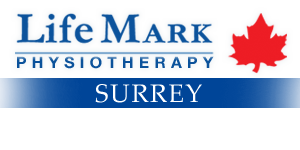The holidays are approaching, and if this holiday season, Jingle Bells has a different kind of ring to it, don't be alarmed, you, like many Canadians may be experiencing the effects of something called Tinnitus, or ringing in the ear.
The potential causes of these annoying sounds vary, some are benign while others can be more serious.
Tinnitus can present as a variety of different sounds and can be constant or intermittent as well as very subtle, or loud enough that it blocks out other sounds.
The American Tinnitus Association, a support and information group, provides an excellent resource for understanding these symptoms.
Causes include:
• Exposure to loud noises – this can cause short-term tinnitus but continued exposure can lead to permanent damage of the hairs in the ear that detect sound and can lead to ongoing tinnitus.
• Medications – Some medications causes tinnitus. Speak with your doctor about any medications you may be taking that could cause tinnitus.
• Sinus or Ear Infections – These usually settle down as the infection clears up.
• Cardiovascular Disease – Pulsing tinnitus may be caused by a lack of smooth blood flow through the arteries in the ear. These symptoms should be discussed with your physician.
• Muscle and joint problems in the head and neck – Motor vehicle accidents and other types of trauma to the head, neck or jaw can lead to muscle spasm in muscles near the ear. This increased tension can be a common cause of tinnitus as well as vertigo and nausea. Physiotherapists can help get these muscles and joints moving again.
The bottom line is, Tinnitus can often be a disconcerting and persistent issue.
Speak with a health care provider about what may be causing your symptoms and ways to treat or control tinnitus.
References:
http://www.ata.org/
http://www.nidcd.nih.gov/health/hearing/noiseinear.asp
Showing posts with label rehab. Show all posts
Showing posts with label rehab. Show all posts
Wednesday 9 October 2013
Monday 9 September 2013
Tale of The Tape
Kinesiology Tape... It's become as common a visual in athletics as wristbands and running shoes.
Whether you happen to catch a few Surrey Eagles players at the gym or you're watching an Olympic sprinter on TV, chances are, you'll see some athlete showing off their colourful 'tape art'.
But what are all these wild and outrageously coloured tape mosaics we see plastered all over our favourite athletes and what are they there for?
Well, with all the advances in sport medicine for addressing sports related injuries and strains in recent years, kinesiology tape has become a recognized practice at all levels of athletics, for providing extra relief and treatment of sore, tender areas of the body in need of repair.
But don't be fooled by the unusual application patterns. No, it's not a case of kinesiologists' inner Picassos gone wild. There's real, scientific method to the seemingly random madness of these unique and sometimes complex applications.
Applied correctly, stretchy kinesiology tape lifts the skin around an injury, allowing for greater blood circulation, speeding and improve healing.
Check out this video, featuring LifeMark Richmond Oval Clinic Director, Melina Kurtakis, demonstrating the application of Rock Tape kinesiology tape to treat an injured knee.
Labels:
physiotherapy,
rehab,
sports
Wednesday 14 August 2013
Pool Therapy Making Waves
There's no denying the fact that while sometimes gravity can be our friend, at other times, gravity can be an obstacle that limits our ability to function at optimum efficiency.
For example, after suffering an injury, rehabilitation can be tough enough without gravity getting in the way and making the road to recovery even harder.
Here at our LifeMark Surrey clinic, we treat all kinds of injuries and ailments. Guiding a patient through recovery requires an ongoing regimen of treatment, including exercise.
On dry land, exercises like a simple squat can be an almost overwhelming endeavour for a patient rehabbing from something like hip surgery. Even walking without the aid of a cane or other stabilizing device, can be a real challenge.
But there is a way to beat gravity and help patients recover more easily, without fear and with a lot less pain... pool therapy!
Without the same degree of gravity pulling on our body, a patient's ability to gradually extend range of motion and perform walking and other exercises is greatly increased. And without the same resistance, patients suffer less pain and no longer fear losing balance and falling.
Our partners at LifeMark Esquimalt have produced this short video, featuring LifeMark Kinesiologist Jen Spaans illustrating how pool therapy with a patient recovering from a serious hip injury.
Subscribe to:
Posts (Atom)


